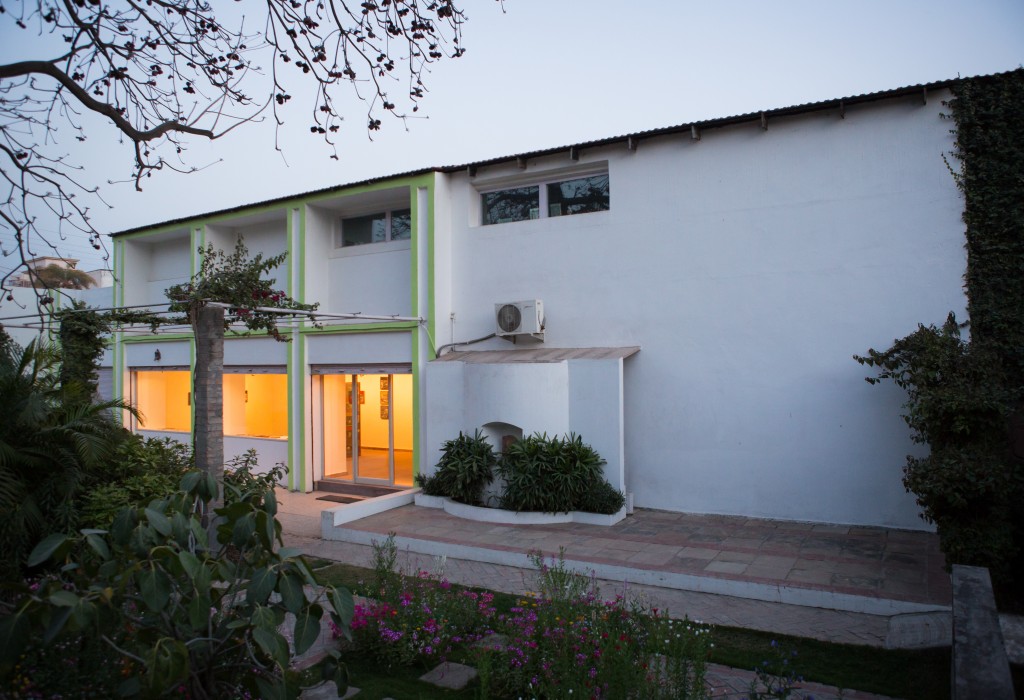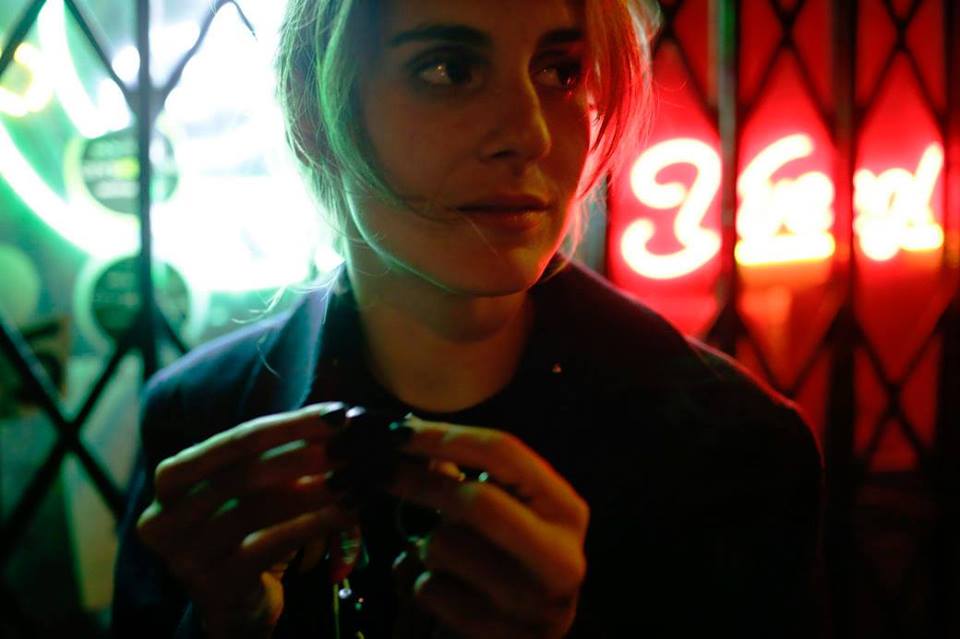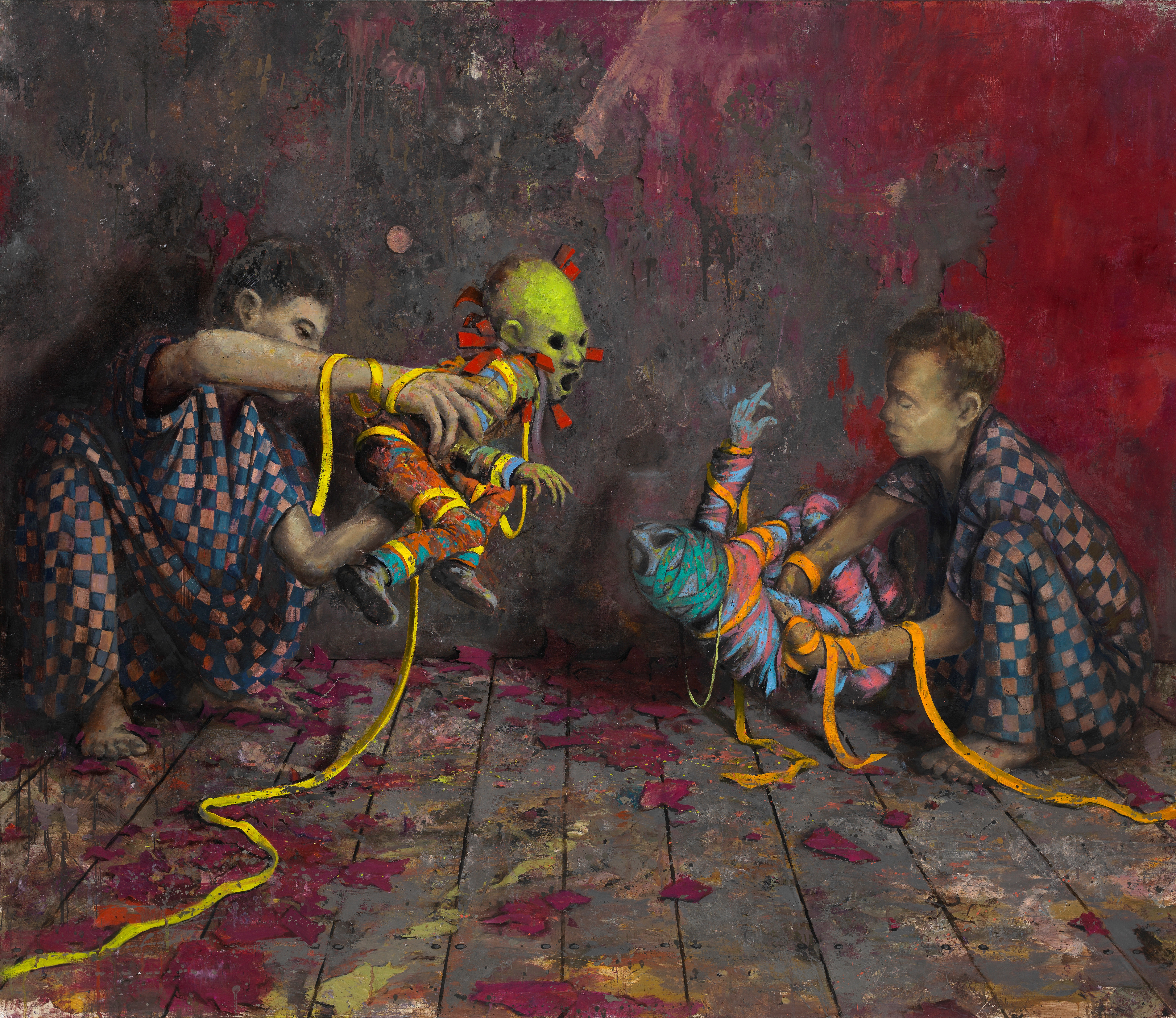
We make sure the artists are not left alone in their studios.
When in Varanasi Vittoria Bonifati met gallerist Navneet Raman who runs Kriti Gallery together with his wife Petra. They bonded instantly and spent much time conversing about art, life, the gallery and it’s residency program…
Navneet you are now 33, at what point did you get interested in art?
When I was 12 years old I started to study photography so my entry to the world of art happened through this medium. I already had an interest in crafts because I learnt carpentry for eight years while at boarding school. I love working with my hands and I also did four years of pottery, batik and screen-printing. All this manual work was an opportunity to express myself.
How would you distinguish art from arts and crafts?
For me all is art as long as you are not doing a repetitive series of one piece. It’s a form of art if a carpenter makes a table but if he is given a design in order to create multiple copies of it for me that’s when the carpenters’ work is no longer art but craft. This is the difference.
Can you tell us more about Kriti, your gallery, and your vision?
The gallery is a place of interaction amongst people and people and art; a place where art, artists, foreigners and locals come together. We want people to feel comfortable. Anyone is welcome, whether they come in to look at art or to sit in the garden and have some time for themselves. The whole point is to set up a literature caffè where we have interesting talks, film screenings and workshops. It’s not a profit-oriented idea, but it would give the place more atmosphere and invite people to spend more time here. That’s when the real interaction happens. In India there are not too many places like this.
Furthermore, as Kriti means “to create”, the gallery is also thought of as a place where people become more creative and, thus, less aggressive… I’m taking about violence in humanity. For example, if youngsters interact with art they might find another language to help them communicate emotions. I think this makes them “softer”. I try to set an example and hope that it has a replica effect; from the gallery, to the neighborhood, maybe the city of Varanasi and who knows… so many people from all over the world come to visit Benares, they might take this back to their countries, as well. Having said this, I have specific parameters for the gallery’s programme: I will show the finest art that I can bring to Benares without compromising it. I look at art as such, and not as Indian Art, German Art, American Art and so forth. I only show artists that are still alive.
Through your gallery and the art you show, your aim is to soften the soul of people? What do you mean by this?
Yes, but without forcing them. The gallery is only there to create an opportunity. When I was at school and I learnt about art and crafts, I realized that I became much “softer” than my friends who didn’t. When you start to work with clay or wood you start to work with nature and you start to be more aware of what’s around you. Suddenly your senses open up and new dimensions unfold, even more so at an early age.
I especially realized this when I returned to Benares to work with school children for 3 years on environmental, ecological and harvesting programs. In some way I wanted to continue working with them and I thought since there are more than 40 000 students in Varanasi, if I create a place where they can come to, it would become much easier to approach them.
What’s your relationship with university students?
Kriti offers residency programs to artists that wish to experience and live the city of Varanasi. They are coming from all over the world to stay with us from one to three months with a wish to develop their work. In exchange all resident artists offer talks at the University of Benares. We also organize open studio visits so that art students can interact with artists.But, the gallery university students are welcome at the gallery any time.
What’s the situation of art in India? Is there a true Art scene? I think there is not. There is a big number of humans so I can’t say there isn’t an art happening, but there is no serious art scene. A scene can only come to life when there is a broader audience of people using art to express themselves and their ideas, and a lot of exchange and interaction is taking place. I don’t see this happening.
Do you think there is a specific reason for this?
The art schools have really little idea finding a way to nurture the scene. The root of all of the problem lies within the way art is taught. In our schools students are denied the chance to learn about 800 years of Indian Art practices, including miniature paintings: it’s techniques, esthetics and narrative drawings. Instead, they are given posters depicting the work of western modern artists, such as Monet or Van Gogh, in order to learn how to copy them.
There are few exceptions standing out: Visva-Bharati University in Santiniketan, MS University of Baroda and JJ School of Art Mumbai. In India art is considered to be a very low profession because it’s still very much related with arts and crafts. If you look at the university entrance programme to apply for art in India the required standards are not very high, especially if compared with other courses. I’m making a very general statement but in today’s democratic world, where numbers matter more than quality, I suppose that from a badge of 200 students there are only about 10 who really want to study art.
This is different for Visva-Bharati University in Santiniketan, you don’t go there unless you are motivated to study art and the entry reuirements are much higher. Also MS University of Baroda, a much bigger university, has a very good art department. Serious artists teach the students, many of which stay in Baroda after they complete their masters. This creates a positive interaction between the alumni, who have the chance to visit studios of former students. In my opinion Baroda is an interesting city for contemporary Art in India.
How do these schools stand out, what makes them different?
They are against a western structure, a western view of education and I suppose that’s the reason why these two places try to do things differently and that’s why these two places have more Indian-ness in their arts education programme. At Visva-Bharati University in Santiniketan one doesn’t only study Indian art but all aspects of Indian culture, like music and mythology. This gives students a much borader knowledge and stronger foundation, allowing them to draw inspiration from a much rich background belonging to their own culture. It is a true treasure-house. Furthermore, art cannot be created under pressure. Art needs time and thought, as it’s a manifestation of what one has inside. Thus, students also need to be taught how to question themselves, but his concept does not exist within the way we teach them.
Petra, would you like to add anything?
Going back to the problem art and education, I think this has a lot to do with the exposure to cultural life. In Europe through families, media, schools one is exposed to culture and cultural activities since a young age, and much more than in India. Of course it depends on one’s background but schools should be in charge of providing this, as well. Also the Internet can help but it’s only a vehicle. If you don’t have a question first it won’t be of much use.
You are in charge of Kriti’s residency programme, can you tell us more about it?
A residency can be a great opportunity for artists who are interested in India and really want to experience and live Varanasi. In India is not very easy to attend good music concerts, interesting lectures or just meet interesting local people because these activities are not institutionalized, they will more often be organized and hosted by people in a private setting. You have to know your way around and the families who engage in such activities.
As a foreigner who spends a few months in Varanasi this won’t be an easy task since such events are not advertised. Things just happen in a very unstructured and spontaneous way. We make sure the artists are not left alone in their studios. They have the possibility to meet like-minded people, to talk and work with other artists, and of course they can benefit from the gallery’s ambience, as well as activities, workshops and lectures.
We are open to every kind of artist: writers, painters, photographers, sculptures, visual artists. And the residency is purely what each person makes of it. We like to focus on the fact that there won’t be a final exhibition at the end of the residency and the majority of artists agree. I think that if the artists have to deliver an exhibition by the end, their mind will become anxious and preoccupied, and this will influence his work and experience. Our residency is a space in time for each artist to experience art, fully.
Navneet, anything to add?
The residency is an opportunity to give artists the time to interact with the city of Varanasi and with Indian culture. That’s why we don’t want to have too many criteria, and leave it up to the artist and more than anything the luxury of time.
Read more about Kriti Gallery and Vittoria’s conversations with Navneet and Petra in our fifth print issue on VISION (September 2014)!
by Cosima Bucarelli



